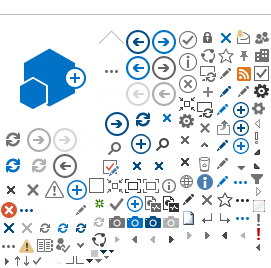Capacity for WWRC's Vocational Training Programs is established and reviewed annually by the WWRC Pegboard Team, with recommendations by the Career and Workforce Development Division Manager that consider multiple factors such as: Code of Virginia, number of qualified instructors and instructional aides (staffing capacity); Virginia Department of Education regulations governing student:teacher classroom ratios for students with disabilities; profile of students enrolled and disability-related considerations; space and other classroom logistics such as operation of curriculum projects and availability of workstations; and the scheduling of internships and other community-based experiences that may 'free up' seats in the classroom at routine intervals. Defined capacity of WWRC's Vocational Training Programs is currently set at 160, with actual utilization reviewed weekly against a 90% target goal. The capacity, documented by training program in WWRC's Logic Model, includes students in full enrollment status as well as those in assessment status.
Code of Virginia 8VAC20-120-150 Maximum Class Size (https://law.lis.virginia.gov/admincode/title8/agency20/chapter120/section150/)
Career and technical education courses designed specifically and approved for students with disabilities shall be limited to an average of 10 students per instructor per class period with no class being more than 12 or up to an average of 12 students per class period with no class being more than 15 where an instructional aide is provided.
Ongoing and routine program census and utilization management procedures are designed to ensure the efficient and effective use of WWRC resources in providing high quality and relevant training opportunities. Goals are:
- To assure effective and efficient utilization of facilities and services through the ongoing monitoring and education of staff.
- To assure fair and consistent utilization management decision making.
- To focus resources on a timely resolution of identified opportunities.
- To assist in the promotion and maintenance of optimally achievable quality of instruction.
- To educate service providers and other staff on the ethical and effective use of center resources.
- To maximize the potential for the center's consumers to obtain employment.
Staff and Team Roles
Staff and team roles are defined as part of the business processes, as follows:
Career & Workforce Development Division (CWDD) Manager
- Initiate scheduled reviews of existing capacities and utilization through team processes and maintain communication with the Pegboard Team and external stakeholders
- Oversee the monitoring and maintenance of training program census and utilization processes
- Implement strategies to ensure relevant and timely engagement of vocational training staff, OD&QA, and the Pegboard Team in defined processes
- Review departmental recommendations and approve changes prior to submitting the results to the Pegboard Team for final review/processing
Admissions Supervisor
- Represent the Admissions Department and acts as the primary note keeper.
- In coordination with OD&QA team members, provide reports on possible trends in activities (referrals, pre-admits, scheduled).
- Act as the primary liaison for DRS field offices to ensure current interests are taken into account throughout the review process.
- As the facilitator of Quarterly Intake meetings, present the possible impact on training program intakes.
Vocational Training & ESS Administration (Supervisors and Department Chairs)
- Participate as directed by the Career and Workforce Development Division Manager, representing their respective training area(s)
- Assist in coordinating meetings and information gathering activities between the review Team and Vocational Training Program instructors under their supervision.
Vocational Training & ESS Instructors
Participate as directed by the Vocational Training Administration and/or Department Chairs to provide information regarding current trends in classroom operations and instruction capabilities.
Organization Development & Quality Assurance Representatives
Participates as the review team facilitator and provides an objective systems perspective on potential and emerging issues as they relate to training program census and utilization.
- Provide information on applicable Business Process (BP) current methods and aids the team in formulating BP changes as necessary.
- Works with Lead Program Evaluation Analyst in identifying applicable data to support the decision making process.
- Consolidates information discussed and drafts written documentation for communicating work and team recommendations.
Provides supporting data from the Agency Program Evaluation (PE) Data System and guides/directs integration of business processes within existing Agency PE Data System.
Business Processes
When a formal census/utilization program review is initiated by the WWRC Pegboard Team or the Career and Workforce Development Manager, the following business processes will be followed:
- Conduct pre-review brief (CWDDD Administration, VT Administration, Admissions Director, etc.)
- Identify review objective(s)
- Review previous program(s) review(s) data and results to include but not limited to
- Current program capacities, utilization, rehabilitation rate, consumer performance, etc.
- Facility resources (equipment, square footage, etc.)
- Student to Teacher Ratio
- Business Processes (intakes, certification participation, assessment period, classroom operations, etc.)
- VDOE Special Education Laws and Regulations
- IDEA Special Education Laws and Regulations
- Review objective(s) and program performance with other staff as necessary (VT Administration, VT Department Chairs, OD&QA, Admissions, CWDD Administration Support, Education Support Services Liaison, etc.)
- Interview program(s) instructor(s) to identify/verify
- Resources/Instructors
- Current capacity/ratio
- VDOE Special Education Laws and Regulations
- IDEA Special Education Laws and Regulations
- Intake schedule (current/recommended)
- Intake limitations – max/min (why?)
- Consumer qualifications (academics, certifications, etc.)
- Morning report – use of the established program including completion date
- Attendance tracking and purpose methodology
- SIP – How many? Timing during program? Length(s)? Can seat be filled?
- How CRC and ESS are used during program
- Any other normally scheduled time out of the class/seat (JSS, etc.)
- Advisory Committee considerations
- Other classroom operations
- Analyze all the information and develop strategies to accomplish objective(s)
- Propose to Department Chairs and Vocational Training Program Instructor(s)
- Make adjustments as necessary
- Draft final proposal and submit for consideration to Pegboard
- Once approved develop strategy for implementation
- Review change(s) after a period of time to ensure objective did not compromise quality of instruction, etc.

